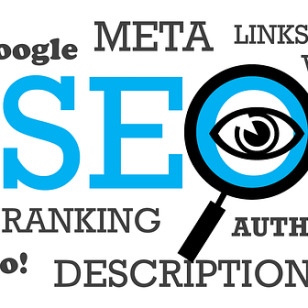By Kelsey Boudin
President and Founder, Southern Tier Communications Strategies, LLC
A content marketing client this week had a story to tell. I had intended to keep our weekly meeting short in the interest of time — when we hopped on the Zoom we both agreed that my time was better spent doing a laundry list of tasks rather than listening. (We’ve already done the content strategy and now it’s time to make it reality.)
But not this meeting. This story needed to be told. Cutting the meeting short wasn’t an option — not only for the sake of understanding as the manager of this organization’s marketing, but more importantly to create content that could drive relevant website traffic and sales leads for years to come.
I can’t discuss the client’s specifics. But this personal story made for a great piece of content marketing. Their narrative detailed a man in crisis, in a familiar yet uncertain circumstance with no obvious conclusion, his wife scrambling to help, and a conclusion that ended happily (for now). It was a story with which many in the client’s target audience could easily relate. They’ve likely lived it. Or they fear it and want to build a plan to prepare for it.
It was the proverbial story of the dreaded sea monster off the edge of the map. What better way to build the client’s brand than to spin a yarn that’s sure to grab attention and tug relatable emotional strings? So I wrote a blog Tuesday, gave it a descriptive and catchy title, and by Wednesday it had already gathered more than five times the organic engagement of a typical post by that client. Certainly worth breaking from the established content map for a post with a timely and relevant draw.
Tell Great Personal Stories in Content Marketing
Great content marketing is great storytelling. Your business or organization should have a narrative that hooks your target audience. Something informative. Something entertaining. Something happy. Something sad. Something chewy. Something that attracts your audience and gets them thinking about their problems — and solutions that you just so happen to offer.
Perhaps you have a personal story that addresses audience pain points. The possibilities are virtually endless:
- Great (or terrible) customer service experiences
- Emergencies
- Confounding problems with intriguing answers
- Arguments/confrontations
- Triumph over tragedy
Anything that could feel identifiable, as if your target audience could stand in your shoes, feel your reality and envision the potential solutions through your eyes. Storytelling takes the viewer, reader and/or listener on a journey from beginning to end, from problem to solution, along a story arc from conflict to climax to resolution.
Here are your five simple ingredients to tell your personal story effectively. (This should sound familiar from high school English.)
1. Protagonist
Your protagonist is you, the good guy and the central character in your narrative. Great content marketing makes your character relatable as someone who walks the same path and seeks the same answers as they do. They have positive intentions for themselves, those around them and/or the causes they serve.
In some cases, like my clients’ story, the protagonist could be two people striving for the same good, experiencing the same bad and working toward a positive outcome. In B2B and B2C content marketing, your character must represent your target buyer or a client archetype that looks to solve their pain points through action (hopefully choosing your product or service).
The content consumer must see themselves in you. You’re David on his way to slay Goliath. In a story well told, they’ll picture themselves drawing back that slingshot — although the action may be simply buying a hair-restoration product, securing dementia-care services or whatever they may need.
2. Antagonist
Your antagonist is Goliath, but it doesn’t necessarily have to be a person or thing. It could be an idea. It could be fear. It could be ego. It could be some unstoppable force like aging or death itself. In your personal story, it’s whatever you were up against that they would also fight or overcome.
My clients found themselves pitted against a medical emergency only their audience could understand — at that, only a certain subset of their audience. This antagonist threatened the husband’s ability to function, and there was seemingly little they could do.
Essentially, the antagonist represents one of the six buyer emotions that causes consumers to act:
- Greed
- Fear
- Altruism
- Envy
- Pride
- Shame
There’s your conflict. Your personal story should present the subject so your target audience addresses the emotion.
3. Narrative Arc
It’s a universal element of storytelling. The story follows an arc from beginning to a logical (or illogical) conclusion. And the plot comprises the individual parts of that arc — the action that occurs within. Overly simplified, your protagonist wakes up or is walking along one day and encounters the evil antagonist.
In content marketing, here’s where you want your target audience envisioning walking with you on the path to “good” interrupted by their familiar or plausible problem. The story arc must take an easy-to-follow path toward a conclusion that ends in solving your issue and theirs, too.
Your personal story should guide your target audience through each relevant step of your journey. My clients’ blog detailed things they experienced during the medical emergency that would resonate easily with others. The target audience could easily empathize with the journey because they’ve either lived it themselves or feel compelled to prepare for it.
4. Climax
You take an action or reach an epiphany. Your brief trial or arduous journey suddenly becomes clear. The “ah-ha!” moment. Your target audience naturally reaches the same conclusion.
For my clients, it was simply having a plan in place for such an emergency and enacting that plan. As nationally renowned experts in preparing such plans for their clients, the moral of the story was that preparation allowed for calm decision making in the moment. And as an agency that provides such calm and assurance through preparation, the solution for the target audience was logical: (“I should be prepared, too.”).
5. Resolution
You overcame the conflict, defeated Goliath, prepared for an emergency, etc. Your target audience walked that path with you by consuming your content. They recognized their pain by empathizing with yours and came to see that your solution is best.
The resolution for my clients’ story ended on a high, somewhat humorous note. It wasn’t all doom and gloom. They ended off, actually, better and the wear — and more prepared themselves. And my writing conveyed the path to a solution — their path and their service — will help others.
Personal Storytelling in Content Marketing Puts Target Audiences in Your Shoes
Personal stories are great for content marketing. It worked for my clients (with me as the ghost writer), and it’ll work for you, too.
Make no mistake, telling this story about telling personal stories in content marketing was my own personal story (a story within a story about stories sounds like something from “Inception,” but I digress). I took you along my journey for you to recognize this logical conclusion: that my online writing services may, in fact, be the right resource for you.
If you ever need help, feel free to reach out to me personally at ke****@************************es.com.








Artificial Intelligence in Strategic Communications: AI Isn’t Enough on Its Own - Grand River Agency
August 8, 2023 @ 3:13 pm
[…] doesn’t know your story. It doesn’t know the people, systems and industries you serve. It can’t venture a guess […]